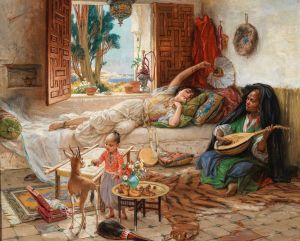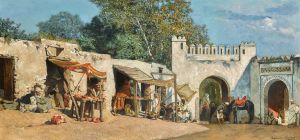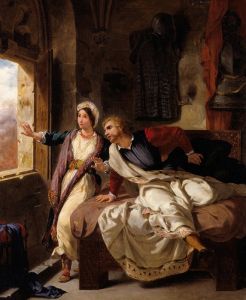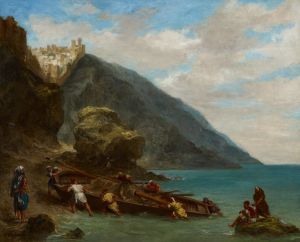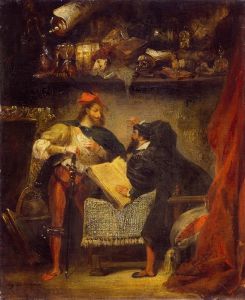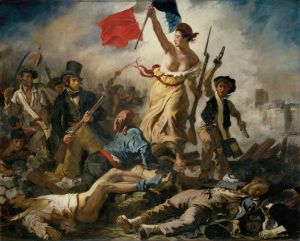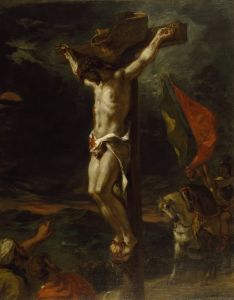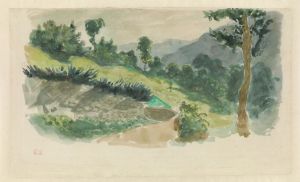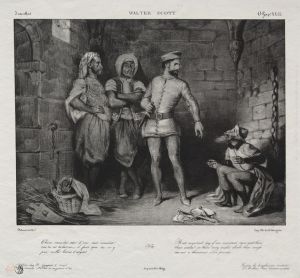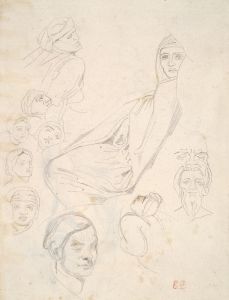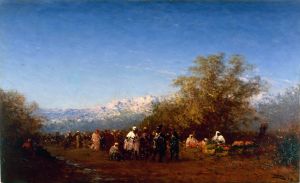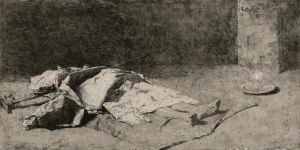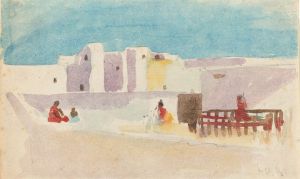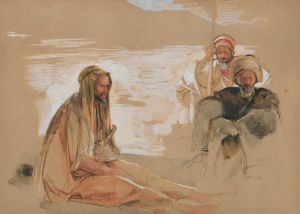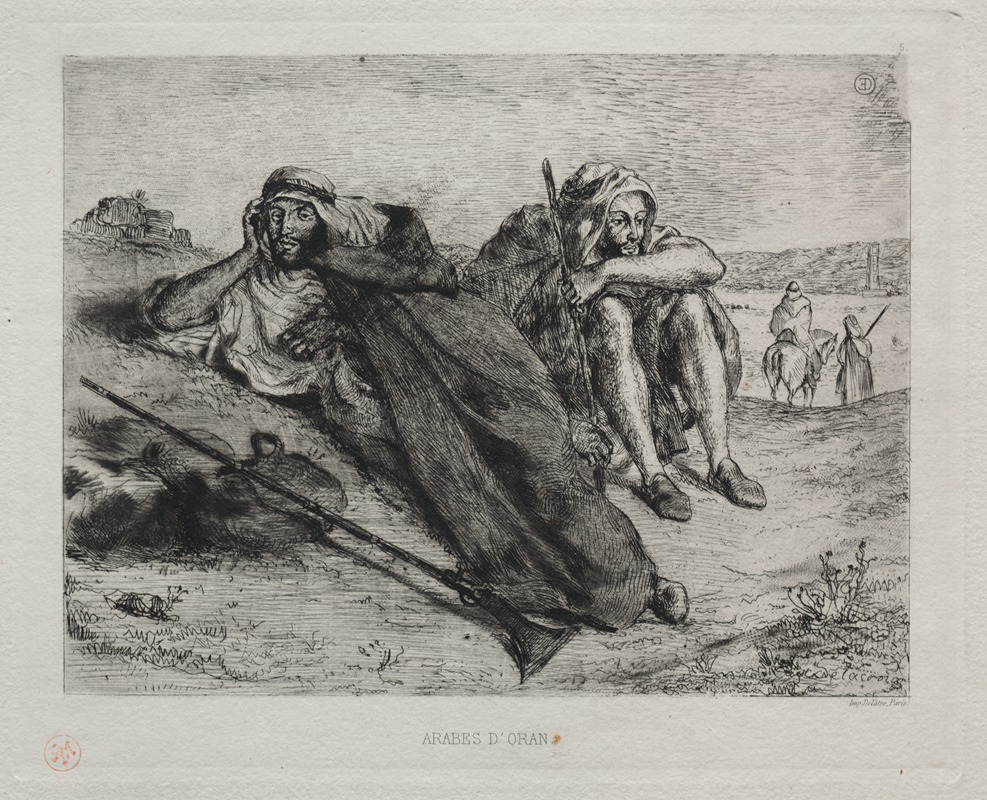
Arabes d’Oran
A hand-painted replica of Eugène Delacroix’s masterpiece Arabes d’Oran, meticulously crafted by professional artists to capture the true essence of the original. Each piece is created with museum-quality canvas and rare mineral pigments, carefully painted by experienced artists with delicate brushstrokes and rich, layered colors to perfectly recreate the texture of the original artwork. Unlike machine-printed reproductions, this hand-painted version brings the painting to life, infused with the artist’s emotions and skill in every stroke. Whether for personal collection or home decoration, it instantly elevates the artistic atmosphere of any space.
Eugène Delacroix, a leading figure of the French Romantic movement, is renowned for his vivid use of color and expressive brushwork. Among his numerous works, "Arabes d’Oran" is a painting that reflects his fascination with the cultures and landscapes of North Africa. Delacroix's journey to Morocco in 1832 significantly influenced his artistic direction, providing him with a wealth of inspiration that he would draw upon throughout his career. This trip was part of a diplomatic mission, and it allowed Delacroix to explore a world that was vastly different from his European surroundings.
"Arabes d’Oran" is one of the many works that Delacroix created based on his experiences and observations during his time in North Africa. The painting captures the essence of the people and the environment he encountered, characterized by vibrant colors and dynamic compositions. Delacroix was particularly interested in the clothing, architecture, and daily life of the people he observed, and he sought to convey these elements with authenticity and respect.
The painting is notable for its rich palette and the way Delacroix uses color to convey emotion and atmosphere. His technique often involved bold contrasts and a loose, fluid application of paint, which helped to create a sense of movement and life within the scene. This approach was a departure from the more restrained and precise techniques of the Neoclassical artists who preceded him, marking a shift towards the more expressive and emotive style that defined Romanticism.
Delacroix's work, including "Arabes d’Oran," played a significant role in shaping the Orientalist genre in art. Orientalism refers to the depiction of Eastern cultures by Western artists, often characterized by a fascination with the exotic and the unfamiliar. While Orientalist art has been critiqued for its tendency to romanticize and stereotype, Delacroix's work is often praised for its depth and sensitivity. His paintings are seen as a genuine attempt to capture the beauty and complexity of the cultures he encountered.
"Arabes d’Oran" is housed in a collection that reflects Delacroix's broader body of work, which includes other notable pieces such as "The Women of Algiers in their Apartment" and "The Fanatics of Tangier." These works collectively showcase his ability to blend observation with imagination, creating scenes that are both realistic and imbued with a sense of drama and emotion.
Delacroix's influence extends beyond his own time, impacting later artists such as the Impressionists and Post-Impressionists, who admired his innovative use of color and expressive technique. His North African paintings, including "Arabes d’Oran," remain significant for their artistic merit and their role in the broader narrative of 19th-century art. They continue to be studied and appreciated for their contribution to the understanding of cultural exchange and artistic expression during this period.





